Sapphire
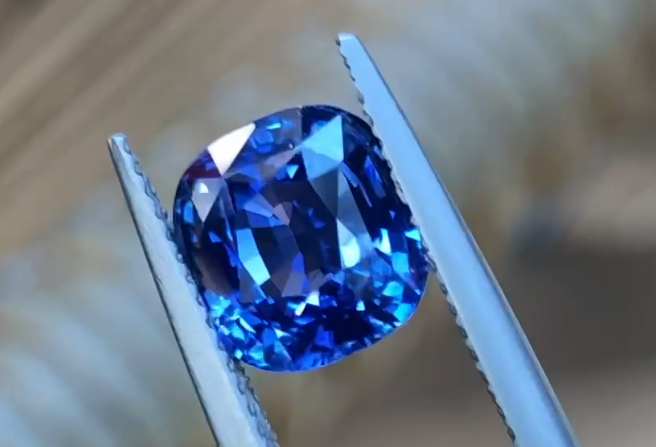
Introduction
The blue sapphire doesn’t shout for attention. It doesn’t need to. Its steady calm, older than most things we trust, still holds. Sri Lankan sapphires come in many tones. No matter the shade, they carry the same structure and quiet strength. You don’t wear one to impress. You wear it to stay grounded in something very old. Their value isn’t just measured in price or clarity. It lives in what they’ve seen, deep beneath the surface, long before we ever reached down and pulled light from stone.
📐 Sapphire Characteristics & Properties
Sapphire is a variety of the mineral corundum, ranked at 9 on the Mohs scale, second only to diamond in hardness. Its most iconic color is deep royal blue, but sapphires occur in nearly every shade except red. The stone’s brilliance depends on trace elements like iron and titanium, influencing both hue and light behavior. Most sapphires are transparent, with treatments such as heat commonly used to enhance clarity and saturation. These processes are widely accepted in the gem trade and do not reduce a stone’s natural authenticity.
- Mineral: Corundum
- Hardness: 9 (Mohs scale)
- Color: Typically blue, but found in nearly all colors
- Treatment: Usually heat treated to enhance color and clarity
- Transparency: Transparent to translucent
The universe – once believed to hold infinite wonders. But deep beneath the surface of a finite Earth lies a sapphire… that quietly catches the light.
🛠️ Cut Styles & Suitability
The cut of a sapphire influences both its brilliance and its personality. Oval and round cuts are most versatile, allowing the stone to reflect light evenly while maintaining structural strength. Cushion and emerald cuts are elegant but require careful setting due to larger facets and flat tables. Pear-shaped sapphires are more delicate and often used in specific designs, where their asymmetry becomes a strength. Choosing the right cut is not just a matter of style, but also of how the gem will be worn and what story it’s meant to tell.
Oval Cut

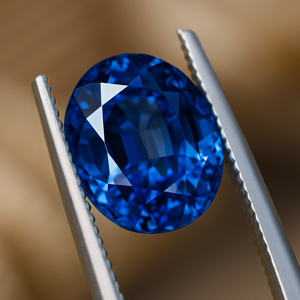
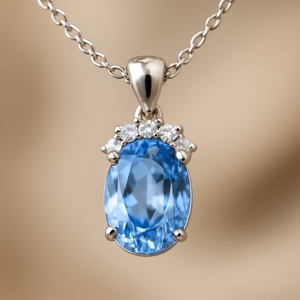
🟢
Round

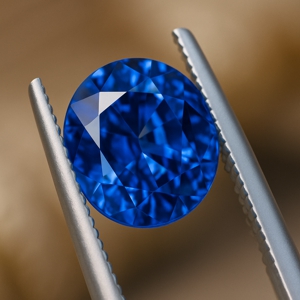
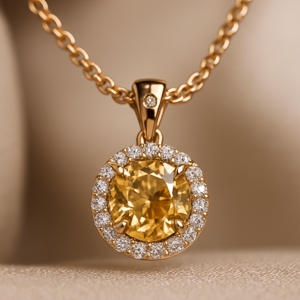
🟢
Emerald

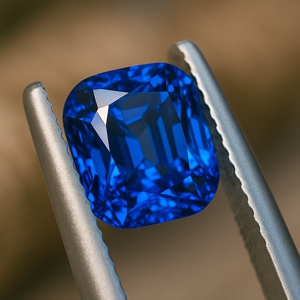
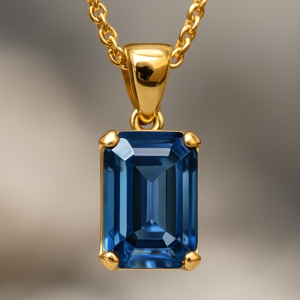
🟡
Cushion

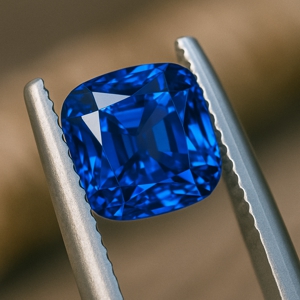
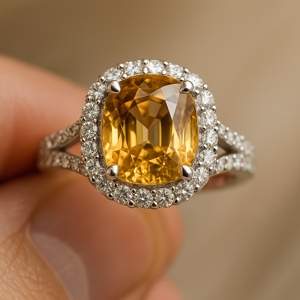
🟡
Pear

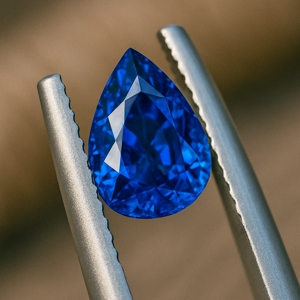
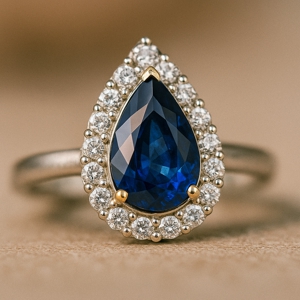
🔴
🟢 Ideal for most jewelry types | 🟡 Use with care or specific settings | 🔴 Rarely used or technically tricky
Not real listings – just quiet moments of light and form, to help each cut speak for itself.
Geology & Origin
Saphires form deep within the Earth’s crust under immense pressure and heat. They belong to the corundum family and rank 9 on the Mohs scale of hardness. Natural deposits are found in Sri Lanka, Madagascar, Myanmar, and Australia. The color of a sapphire depends on trace elements present during formation. Iron and titanium often give rise to the iconic blue tone, but other shades occur, from soft pastels to vivid, saturated hues.
Historical Significance
Since ancient times, sapphires have symbolized wisdom, virtue, and protection. They were worn by kings, clergy, and scholars, believed to offer divine favor and clarity of mind. In Persian tradition, the sky itself was thought to be blue because it mirrored a vast sapphire beneath the heavens. In medieval Europe, sapphires were carried as talismans against poison and betrayal, treasured not only for their color but for their perceived spiritual power.
Distinction & Rarity
Unlike diamonds, sapphires are admired not for brilliance alone, but for their inner glow and depth. Their beauty lies in subtle light absorption and a soft, velvety appearance. The rarest specimens, such as Kashmir sapphires, show a distinctive cornflower blue with a silky luster. While many sapphires are untreated, gentle heat treatment is commonly used to improve clarity and hue and is fully accepted within the gemstone trade.
🕊 Sapphire Mythology & Symbolism
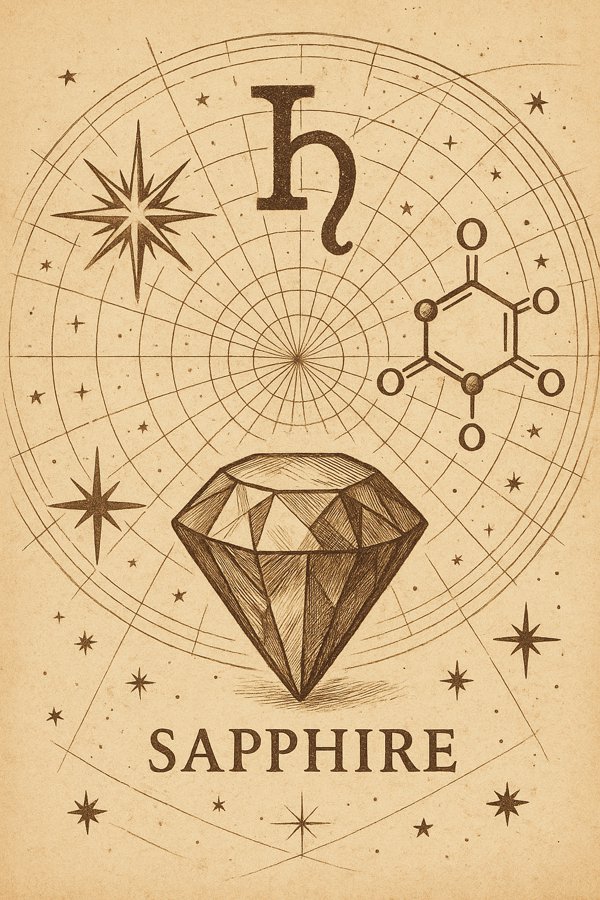
What was the ancient belief surrounding the gem?
Spiritual Power & Royal Symbolism
Across cultures and centuries, sapphires have symbolized divine wisdom, protection, and spiritual insight. Worn by rulers and priests, they were seen as a link between earthly power and celestial guidance. The deep blue color reflected the sky and the unknown beyond, giving rise to the belief that sapphires held the essence of the heavens. The deep blue color reflected the sky and the unknown beyond, giving rise to the belief that sapphires held the essence of the heavens. Kings would embed sapphires into seals and armor, not only for protection but also to claim divine legitimacy and rule by celestial mandate.
Astrology & Faith:
In astrology, sapphires are associated with the planet Saturn and are said to support focus, structure, and endurance. As the birthstone of September, the gem is believed to bring clarity and honesty to its wearer. In religious traditions, sapphires were engraved with sacred texts and placed on altars or robes as signs of reverence and responsibility.
Inner Clarity & Legacy:
Beyond ancient meaning, the sapphire has become a symbol of loyalty, sincerity, and self-reflection. It is often chosen to mark personal change or emotional depth. Where once it pointed to the divine, it now points inward, toward quiet strength, integrity, and a deeper kind of truth.
Celestial Geometry:
The circular patterns and radial lines in the ancient maps behind the gem symbolize cosmic order and divine symmetry. For many ancient cultures, the alignment of gemstones with celestial events indicated moments of insight, protection, or transition. The sapphire, often linked with the planet Saturn, was seen as a crystallized form of heaven’s structure.
Esoteric Meaning:
Esoteric traditions believed that sapphires carried encoded wisdom. They were worn to access hidden truths, align the inner self with universal laws, and serve as tools for spiritual initiation. The hexagonal pattern shown in the image may represent a deeper, metaphysical blueprint of balance and transformation.
Natural, untreated colors

The real one:
Untouched by heat or chemical influence, these sapphires preserve the purity of their natural formation. Their color, clarity, and energy reflect the geological forces that shaped them over millions of years. Highly valued for their authenticity, they are rare and often prized by collectors and connoisseurs.
Natural – but Enhanced

Genuine, yet refined:
These sapphires originate from nature but have undergone treatments such as heat to improve their color or clarity. The gem remains real, and the enhancement is widely accepted in the trade. It balances affordability with visual appeal, making it a trusted choice for modern jewelry.
Beautiful – but Deceptive

Looks can mislead:
Often lab-created, heavily treated, or misrepresented as sapphire, these stones may appear brilliant but lack the geological and energetic authenticity of the natural gem. While visually attractive, they are commonly used in low-cost markets and should be clearly declared to avoid misleading buyers.
Color alone provides only a rough indication. The lines between untreated, treated, and synthetic sapphires can blur. Only professional gemological testing can determine a stone’s true nature with certainty.
🧪 Sapphire Tests & Identification
Gemstones can often appear deceptively similar, even when they differ greatly in origin, value, or durability. Accurate identification requires more than just a visual impression. While color and shape offer clues, they are not definitive indicators of authenticity.
Why visual inspection is not enough
Natural and synthetic sapphires may share visual characteristics, yet differ significantly in structure and composition. Inclusions, growth patterns, and spectral responses are essential clues. Only advanced gemological methods can reliably reveal whether a stone is untreated, enhanced, or lab-created.
Common techniques include:
- Spectroscopy
Analyzes the light absorption of a gemstone to detect its chemical fingerprint and identify treatments or synthetic origin. - Heat Imaging
Reveals internal stress patterns or heat-treatment effects that are invisible to the naked eye. - Inclusion Analysis
Examines internal features such as needles, crystals, or growth lines to distinguish natural from synthetic specimens. - Refractive Index Testing
Measures how light bends through the gem to help confirm its identity and detect simulants.
These procedures ensure authenticity, uncover hidden enhancements, and support correct classification, providing both buyers and sellers with reliable knowledge.
🏆 Sapphire Superlative & Fun Facts
💰 Largest recorded specimen:
The Logan Sapphire, weighing an impressive 423 carats, is one of the largest faceted blue sapphires in the world. Originating from Sri Lanka, it now resides in the Smithsonian Institution.
🔬 Smallest faceted stone:
Precision-cut sapphires below 1 mm are used in high-end watchmaking and micro-jewelry. Some weigh less than 0.002 carats and require microscope-level faceting.
💎 Most expensive ever sold:
The Blue Belle of Asia fetched over $17 million at auction in 2014. At 392.52 carats, it is not only large, but also exceptionally vivid in hue and clarity.
🧊 Deepest origin found:
Sapphires form under intense pressure and heat—some specimens from Madagascar and Myanmar trace their crystal growth to depths of over 30 km within Earth’s crust.
👀 Most unusual inclusion:
One rare Kashmir sapphire was found with a perfectly hexagonal zircon crystal trapped inside, an optical curiosity studied for its symmetry and clarity contrast.
🔮 Spiritual & Metaphysical
How is it used spiritually or energetically today?
In contemporary spiritual practice, sapphires are valued for their grounding presence and quiet clarity. Commonly associated with the throat chakra, they are believed to support honest speech and alignment between thought and expression. Many use sapphires in meditation to still the mind and invite deeper awareness. Rather than amplify energy, they are thought to stabilize it, creating a calm inner space for reflection, sincerity, and emotional resilience.
🔮 Birthstone: September
🧘♂️ Traits: Calmness, sincerity, truth
♍ Zodiac: Virgo – clarity & focus
♎ Zodiac: Libra – harmony & insight
🪐 Planet: Saturn – discipline & depth
Birthstone & Zodiac Connections
Sapphire is the traditional birthstone for September, associated with calmness, sincerity, and a deeper sense of inner truth. It is often chosen to support clarity of thought and emotional balance.
Astrologically, sapphire is linked to Virgo and Libra. For Virgo, it emphasizes structure and mental clarity. For Libra, it enhances fairness, balance, and harmony. The stone is also connected to the planet Saturn, symbolizing discipline, long-term focus, and mature insight
💍 Jewelry & Cultural Significance
Traditional Jewelry Use
Sapphires have long been cherished in fine jewelry, especially for engagement rings. Their exceptional hardness and brilliance make them ideal for daily wear in rings, earrings, and bracelets. Oval, round, and cushion cuts are among the most popular shapes, highlighting the gem’s deep color and clarity.
Historical & Royal Applications
Throughout history, sapphires have symbolized nobility, divine favor, and authority. Monarchs embedded them in crowns, brooches, and royal regalia to represent wisdom and legitimacy. One of the most iconic pieces is the blue sapphire engagement ring worn by Princess Diana and now by the Princess of Wales.
Spiritual & Cultural Traditions
In spiritual practice, sapphires were believed to repel negative energy and invite divine insight. In Vedic astrology, the blue sapphire is linked to the planet Saturn and regarded as a powerful catalyst for transformation, discipline, and karmic rebalancing. Its use is traditionally guided by astrological consultation.
Modern Symbolism & Pop Culture
Today, sapphires are seen as emblems of inner truth, loyalty, and self-awareness. They are frequently chosen by public figures who wish to project understated strength and authenticity. From red carpets to meaningful personal gifts, sapphires bridge timeless elegance with modern expression.
🌿 Moodboard

Where stillness meets reflection. The world above is echoed below.

Silence is a form of knowing.

Elegance, not to impress – but to remain.
You don’t wear a sapphire to be seen.
You wear it to remember what sees you.
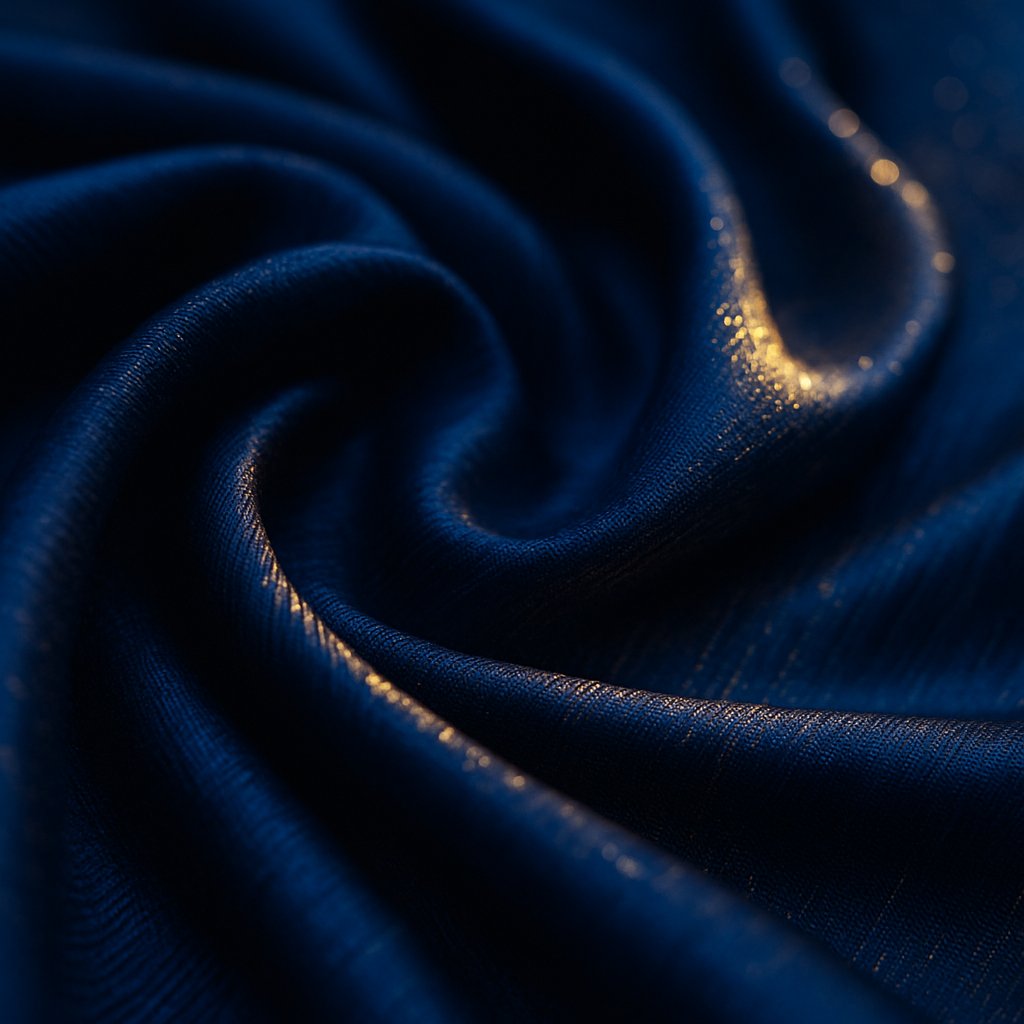
Texture of thought. Quiet complexity beneath every surface.

Some truths don’t shine. They resonate.
🎁 Onlineshop – Currently under gentle construction…

We know. Mood met elegance – and then tripped over a button.
Our shop will open soon. Until then: admire the blueprint, ignore the mess, and know that somewhere… a gemstone just rolled under the table.
For further general information, see the Wikipedia article on sapphire.





